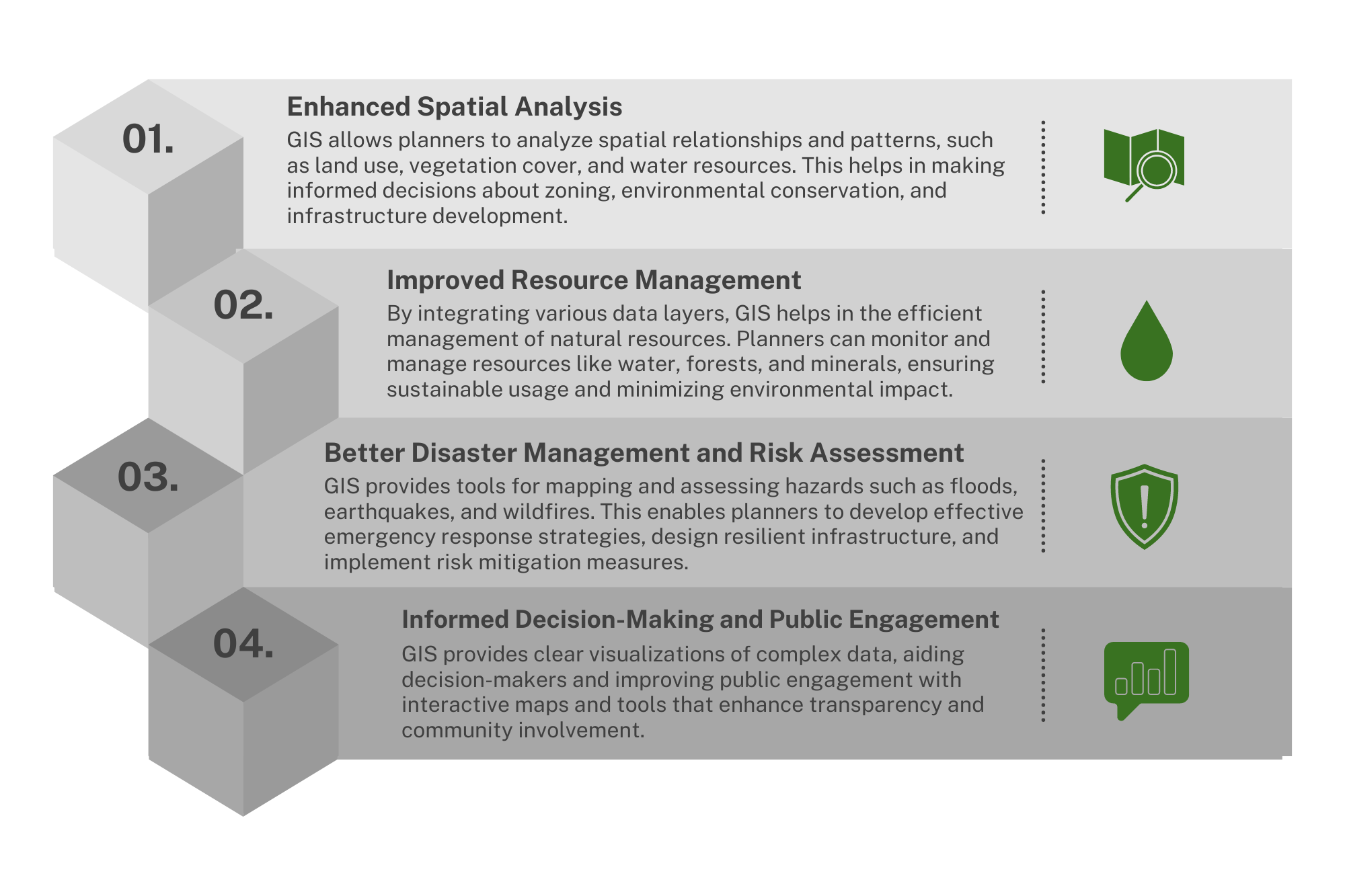GIS in transportation and logistics industry

Key Features of GIS in Transportation & Logistics
Optimized Route Planning
Reduce travel time and fuel consumption with intelligent route optimization based on real-time data.
Enhanced Fleet Management
Track your fleet in real-time, monitor driver behavior, and ensure timely maintenance and more.
Supply Chain Visibility
Gain comprehensive visibility across your entire supply chain to improve inventory management and reduce inefficiencies.
Safety Enhancements
Identify accident-prone areas, implement targeted safety measures, and support emergency response efforts.
Sustainable Practices
Minimize Environmental Impact by Optimizing Routes and Adopting Sustainable, Eco-friendly Practices.
Case Studies
Improving Fleet Management with GIS
In the fast-paced world of fleet management, efficient decision-making is crucial. Geographic Information Systems (GIS) have emerged as a transformative tool, offering profound insights through spatial data analysis. By leveraging GIS, fleet managers can enhance operations, optimize routes, and improve overall efficiency.


Enhancing Supply Chain Visibility with GIS
Benefits of Implementing GIS in Transportation & Logistics
Cost Savings
Reduce operational costs through efficient route planning and resource allocation. GIS helps minimize fuel consumption and travel time, leading to significant cost reductions and increased profitability.
Increased Efficiency
Enhance overall operational efficiency with real-time tracking and optimized logistics. GIS streamlines processes, reduces delays, and ensures timely deliveries, boosting your productivity.
Customer Satisfaction
Provide better customer service with real-time delivery tracking and accurate service area mapping. GIS allows customers to monitor their deliveries, ensuring transparency and reliability.
Safety and Reliability
Enhance safety with targeted measures and reliable emergency response. GIS identifies accident-prone areas, supports emergency coordination, and ensures the safety of your operations.
Sustainability
Promote sustainable practices and reduce your environmental footprint. GIS helps optimize routes, adopt eco-friendly practices, and support green logistics, contributing to a healthier planet.
What Our Clients Say





Ready to Transform Your Operations?
Contact us today to learn more about how GIS can revolutionize your transportation and logistics operations.
Frequently Asked Questions
GIS improves route planning by using real-time data on traffic conditions, weather, and road closures. It optimizes routes to minimize travel time and fuel consumption, ensuring timely deliveries and reducing operational costs.
GIS enhances fleet management by providing real-time tracking of vehicles, monitoring driver behavior, and scheduling maintenance proactively. This leads to reduced breakdowns, improved safety, and better resource allocation.
Yes, GIS provides real-time tracking of shipments and inventory, giving complete visibility over the supply chain. This reduces delays, minimizes lost shipments, and ensures accurate inventory management.
GIS promotes sustainability by optimizing routes to reduce fuel consumption and emissions. It also helps companies adopt eco-friendly practices and highlights green logistics options, contributing to a reduced environmental footprint.
The costs of using GIS can vary depending on the complexity of the system and the specific needs of your business. However, the investment often pays off through cost savings, improved efficiency, and enhanced customer satisfaction.
